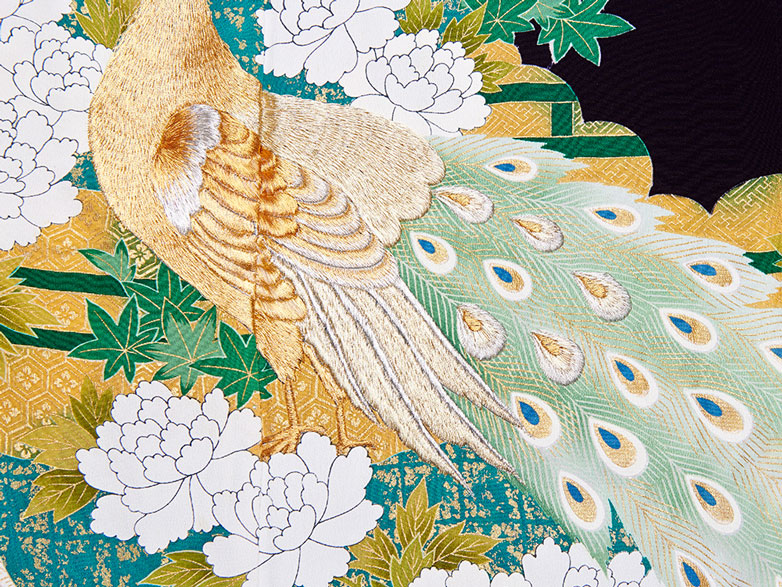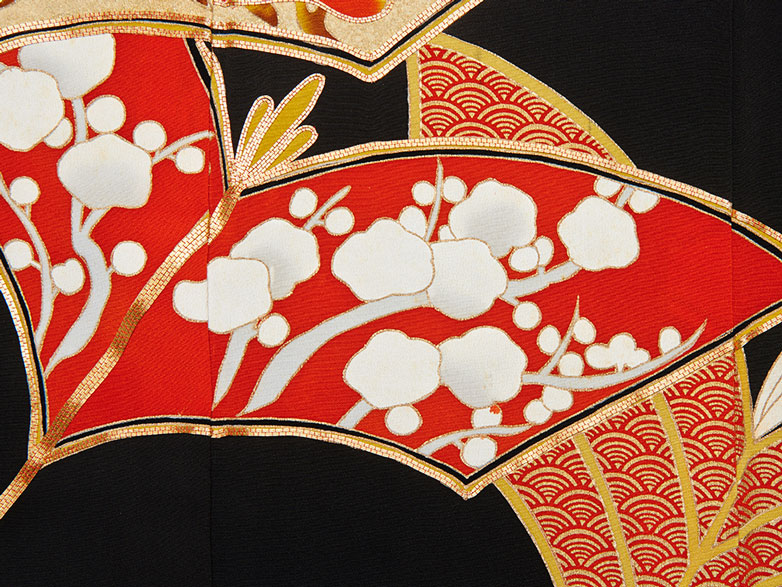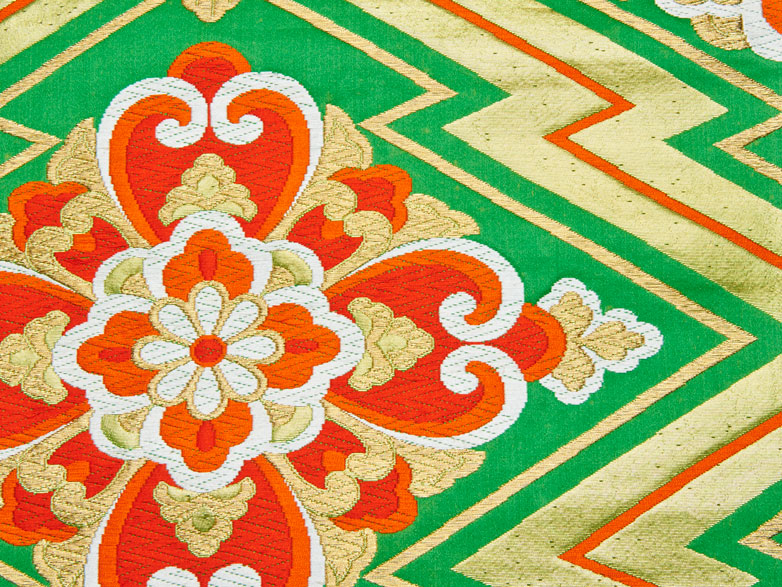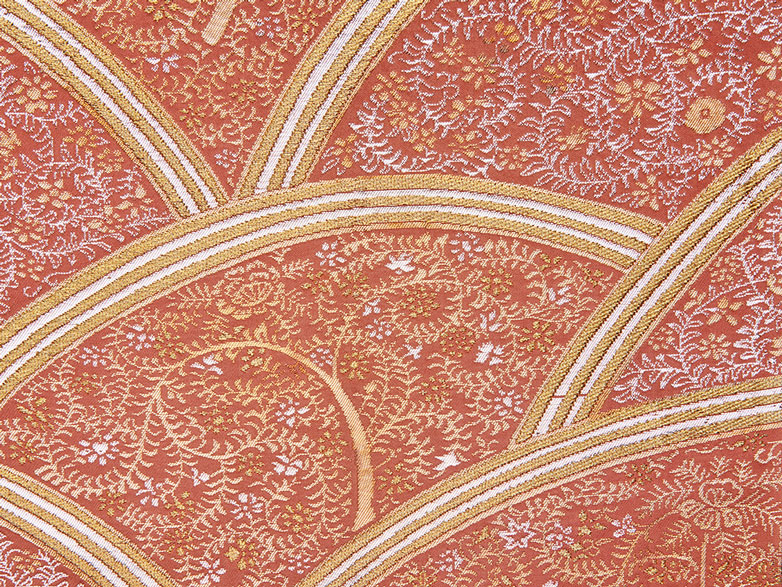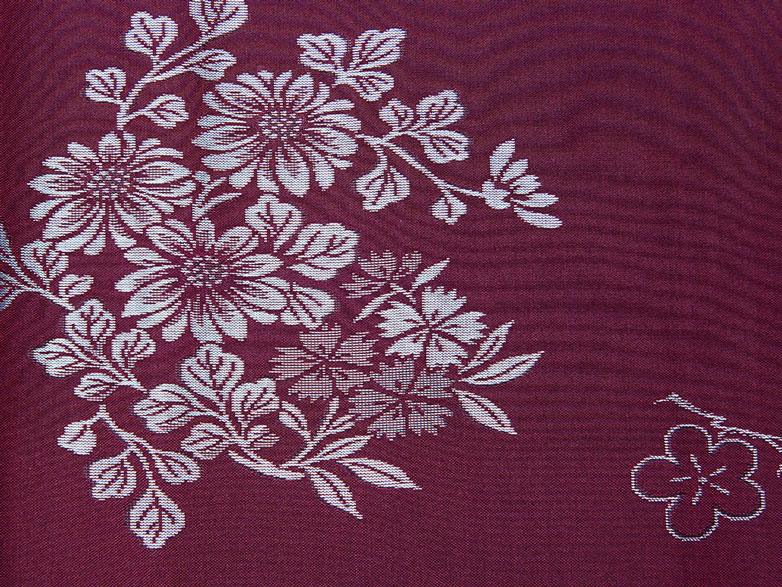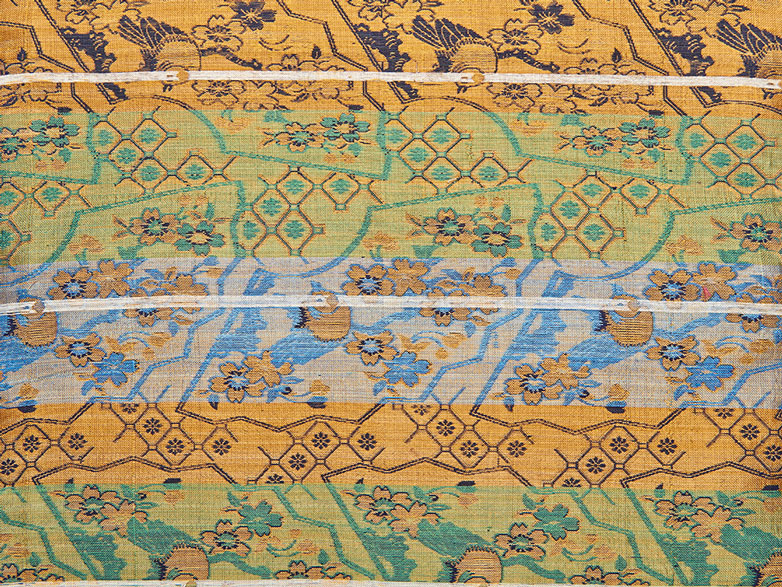To see inside the drawer, please click on each title.
1st Drawer – Why is kimono so fashionable?
a. Taking the next season in advancea.
Japan has four distinct seasons: spring, summer, fall, winter. Each season’s temperature is different, so is the scenery of nature. In spring, beautiful cherry blossoms emerge everywhere, and the fog drifts into the mountain areas. Summer is very hot, yet there are many summer festivals at the Buddhist temples related with Obon (In Buddhism, it is believed that the spirits of those who passed away come back to earth for three days.) Ancestors are greeted with fireworks and lighted paper lanterns at night. There are many dances, Japanese drum performances and sometimes fishermen will hoist their sails and float on the waters at the same time as the festivals. Seasonal riverside and beach restaurants open. In Sendai city, where Atelier Aoba is located, there is a Tanabata Matsuri festival in early August, one of the biggest and most famous Tanabata festivals commemorating the romantic story of two lovers represented by the stars Vega and Altair, who only get to meet once a year. Bamboo branches are decorated with ornaments and small pieces of colored paper on which people write their wishes (Tanzaku). It is reminiscent of a western Christmas tree. In fall, there are many days with clear, blue skies. The green leaves of the Maple tree mature to a deep orange or red. Many shrines in local regions have festivals to give thanks for the rice harvest. In winter, there is much snow in the mountain areas and the waves are high on the Sea of Japan coast (west side). The year ends and a new year begins with traditional ceremonies.
Kimonos are made to take in the next season’s natural colors, festivals and customs in advance. Wearers of the kimono display their garments two weeks to two months ahead of the season. Plum flowers bloom in mid-February to March, so a kimono with a plum pattern can be worn in January to early March. Koinobori (a carp flag) is the symbol of Children’s day on May 5th. This obi (kimono belt) pattern can be seen in early April to early May. Goldfish and fuin (a windchime in the shape of a bell) decorate obis worn at the end of June to early August. Red Maple leaf patterned kimonos are worn from October to mid-November. Snowy mountain patterns can be found in late November to January. As you see, kimono fashion is sensitive to both nature and the approaching season.
Of course there are exceptions; cherry blossoms, pine trees and Japanese crane patterns are considered very fortunate and can be used in any season. Some Furisode (long sleeve kimono for single women) which you see on Adult Day in Japan has all of those fortunate patterns on one kimono, so don’t be shocked or confused if you see such a kimono.
b. Playing with colors
As Japanese are sensitive to the changing colors of each season, it is reflected in their life and fashion. The colors used in kimono are taken from the colors found in nature such as flowers, trees, mountains, lakes, oceans and skies, and are named after them. For example, pink represents spring, light blue is summer, deep orange is fall and dark blue or dark red is winter.
Kimonos have a base color, pattern colors and embroideries. Kimonos can then be matched with different obis which can modify the entire look and style.
c. Many accessories to match and coordinate the styling
Adding an obi, can intensify or tone down the color effect of an outfit. The color coordination can also convert the expression of an outfit from formal to casual. Obiage (scarf-like piece of cloth that keeps the upper part of the obi knot in place), obijime (a thin rope attached to the obi), obidome (obi jewelry) and haneri (decorative collar) can also transform the color effect. Adding a zori (formal Japanese sandal) and a handbag can complete the look. This high fashion can be tailored to present many looks; modern, conservative, cute, chic, subdued, alluring etc.
Now you can see why kimono styling is so fashionable! It is well thought out and at the same time very whimsical. We use these kimono materials to be creative and playful in making a luxurious, one of a kind clutch bag.
